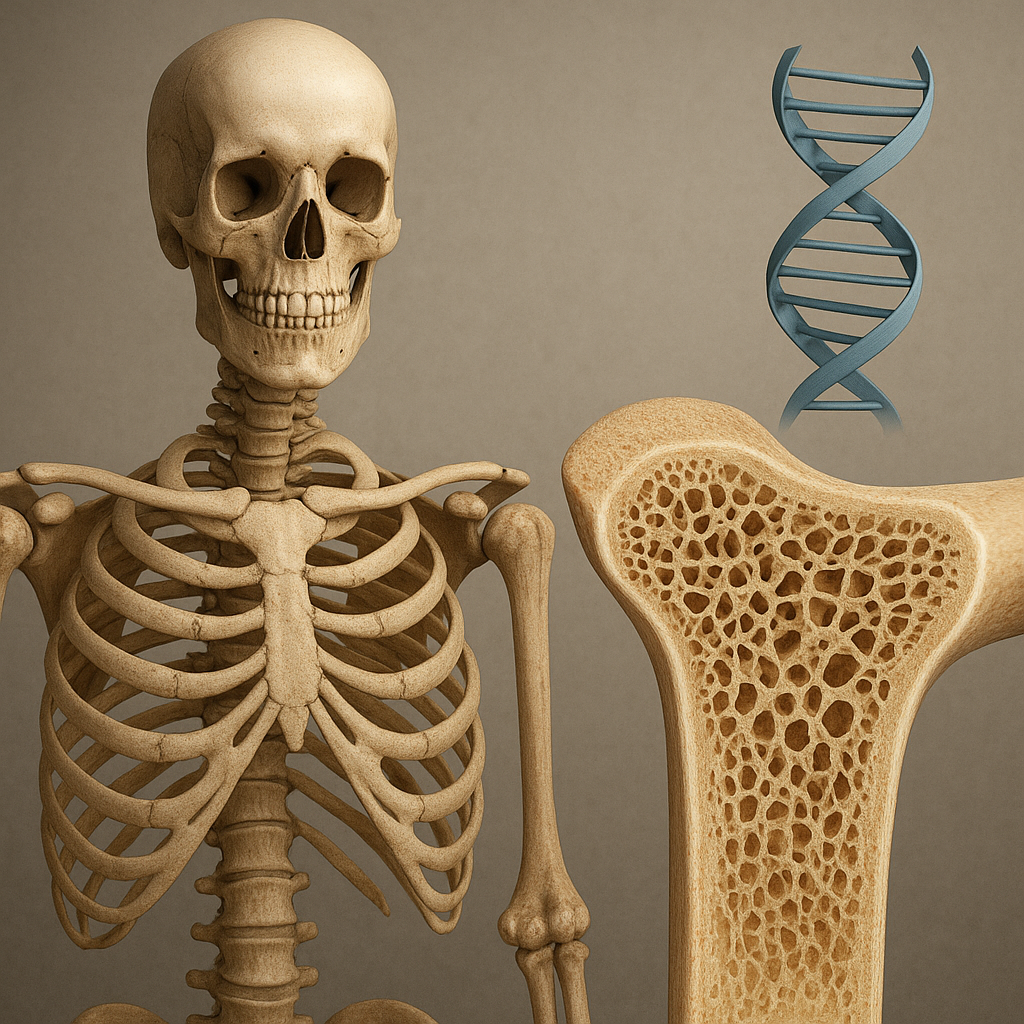Osteoporosis is a condition characterized by weakened bones, making them more susceptible to fractures and breaks. This silent disease often progresses without any noticeable symptoms until a fracture occurs, which can lead to significant health complications. Understanding osteoporosis, its risk factors, and effective management strategies is crucial for maintaining bone health and preventing serious injuries.
Understanding Osteoporosis
Osteoporosis is often referred to as a “silent disease” because it can progress without any obvious signs. The condition occurs when the body loses too much bone mass, makes too little bone, or both. As a result, bones become fragile and can break easily, even from minor falls or injuries. The most common sites for fractures include the hip, spine, and wrist.
Causes and Risk Factors
Several factors contribute to the development of osteoporosis. These can be categorized into non-modifiable and modifiable risk factors.
- Non-modifiable Risk Factors:
- Age: Bone density decreases with age, particularly after the age of 30.
- Gender: Women are at a higher risk, especially post-menopause due to a drop in estrogen levels.
- Family History: A family history of osteoporosis can increase an individual’s risk.
- Body Frame Size: Individuals with smaller body frames tend to have a higher risk because they may have less bone mass to draw from as they age.
- Modifiable Risk Factors:
- Diet: A diet low in calcium and vitamin D can contribute to bone loss.
- Physical Activity: Sedentary lifestyles can weaken bones, while weight-bearing exercises can strengthen them.
- Tobacco and Alcohol Use: Smoking and excessive alcohol consumption can interfere with the body’s ability to absorb calcium.
- Medications: Certain medications, such as corticosteroids, can increase the risk of osteoporosis.
Symptoms of Osteoporosis
Osteoporosis is often asymptomatic until a fracture occurs. However, some signs may indicate the presence of the disease:
- Loss of height over time
- Stooped posture
- Back pain, which may be caused by a fractured or collapsed vertebra
- Fractures that occur more easily than expected
Managing Osteoporosis
While osteoporosis cannot be completely cured, it can be effectively managed through a combination of lifestyle changes, medications, and regular monitoring. The goal of management is to prevent fractures and maintain bone health.
Dietary Changes
A balanced diet rich in calcium and vitamin D is essential for bone health. Here are some dietary recommendations:
- Calcium: Adults should aim for 1,000 to 1,200 mg of calcium per day. Good sources include dairy products, leafy green vegetables, and fortified foods.
- Vitamin D: This vitamin helps the body absorb calcium. Sun exposure, fatty fish, and fortified foods are excellent sources. Supplements may be necessary for those with limited sun exposure.
- Protein: Adequate protein intake is important for bone health. Include lean meats, fish, beans, and legumes in your diet.
Physical Activity
Regular physical activity is crucial for maintaining bone density. Weight-bearing exercises, such as walking, jogging, and dancing, help strengthen bones. Resistance training, such as lifting weights, can also be beneficial. It is important to consult with a healthcare provider before starting any new exercise program, especially for those with existing health conditions.
Medications
For individuals at high risk of fractures, medications may be prescribed to help strengthen bones. These can include:
- Bisphosphonates: These drugs help prevent the loss of bone mass.
- Hormone Replacement Therapy (HRT): This can be effective for post-menopausal women to help maintain bone density.
- Selective Estrogen Receptor Modulators (SERMs): These mimic estrogen’s beneficial effects on bone density.
- Denosumab: This medication is an antibody that helps reduce bone resorption.
Regular Monitoring
Regular check-ups with a healthcare provider are essential for monitoring bone health. Bone density tests, such as dual-energy X-ray absorptiometry (DEXA) scans, can help assess bone density and determine the risk of fractures. Based on the results, healthcare providers can recommend appropriate management strategies.
Preventing Falls
Since fractures are a significant concern for individuals with osteoporosis, fall prevention is crucial. Here are some strategies to reduce the risk of falls:
- Home Safety: Remove tripping hazards, such as loose rugs and clutter. Ensure adequate lighting in all areas of the home.
- Assistive Devices: Use canes or walkers if necessary to maintain stability.
- Vision Checks: Regular eye exams can help ensure that vision problems do not contribute to falls.
- Footwear: Wear shoes with non-slip soles and avoid high heels or slippery shoes.
Conclusion
Osteoporosis is a serious condition that can lead to significant health complications if left unmanaged. By understanding the risk factors, symptoms, and effective management strategies, individuals can take proactive steps to maintain their bone health. A combination of a balanced diet, regular physical activity, appropriate medications, and fall prevention measures can significantly reduce the risk of fractures and improve overall quality of life. Regular consultations with healthcare providers are essential for monitoring bone health and making necessary adjustments to management plans. With the right approach, individuals can live healthy, active lives while managing osteoporosis effectively.













